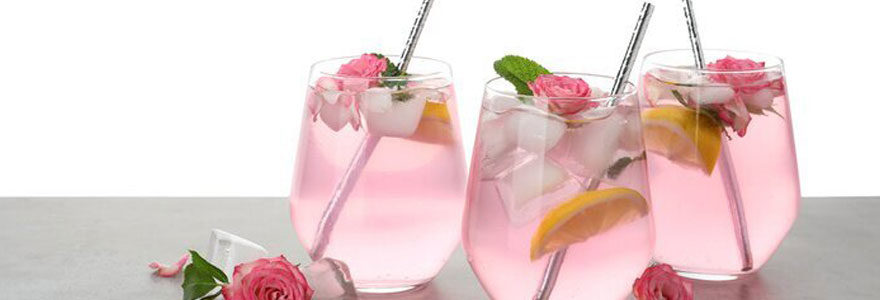Are you looking to take your wine night home to the next level? Get a bottle of sparkling wine from Veuve du Vernay website. These effervescent, flavour-packed bottles are ideal for adding a fizzy touch to your drinking without the need for a party.
However, not all glistening objects are made equal. Sparkling rosé, like non-rosé bottlings, comes in several styles and is made from a handful of different grape varieties from all over the world. Here's all you need to know about the wine.
What’s the Origin of Sparkling Rosé?
"sparkling rosé" refers to a pink wine infused with bubbles. Most popular sparkling wine types, such as Champagne, pét-nat, cava and others, are also available in rosé form. These wines are made in a range of places and styles all around the globe.
To better grasp what makes sparkling rose so unique, you must first get familiar with the wine and how it varies from both red and white wines. Grapes are subjected to fermentation to produce wine.
Rosé wines only remain in touch with their skins for a few hours, unlike red wines, which might undergo fermentation with their skins still on for many weeks or even months. On the other hand, the skins of the grapes used to make red and rosé wines remain throughout the fermentation process, but white wines have theirs removed. It is because of the skin that they have a characteristic pink tint.
One of the reasons this wine is more popular than white wine is that it contains grape skins. The tannins in the grapes' skins are responsible for imparting personality and taste depth to the wine.
What Is the Taste of Sparkling Rosé?
The factors that influence the taste profiles of sparkling rosé include the grapes used, the method of production used and the amount of time the wine was aged on the lees. On the other hand, aromas of red fruit, citrus, cherries and white flowers are consistently present throughout the board in flavour profiles.
Some flavours are consistent throughout all this wine's variations, although each will have its own identity. Fruity aromas and tastes, particularly red berries, raspberries and strawberries, are often in sweeter sparkling rosés. On the other hand, choices like the Brut Rosé, which is on the drier side, contain overtones of sharper tastes like rose petals, grapefruit and even rhubarb.
In general, sparkling rose is a dream come true for everyone who likes fruit. The tastes are delicate yet complex, and they are often more fascinating than champagnes and classic sparkling wines. It is believed that the presence of grape skins, which are maintained throughout the fermenting process, is responsible for this quality. Therefore, if you are a fan of lighter red wines, you could find that this wine is more to your taste.
Simple Food Pairings
One of the reasons this wine is so easy to fall in love with is that it is a wine that works well with food, thanks to its high-level acidity.
It does not matter what you are eating — the sparkling tastes and firm acidity will cut through and bring out the nuances in your food.
Although mixing sparkling rosé with food is almost impossible to mess up, here are a few of the best ideas:
- This wine is the ideal accompaniment to fatty foods like sausages and ribs during a barbecue. Pink bubbly pairs well with BBQ because of its tangy taste.
- When it comes to sparkling rosé, it is essential to complement it with some chocolate-covered strawberries. The wine's acidity will bring out the chocolate's more delicate notes while tempering their sweetness.
Have a bottle of sparkling rosé on hand the next time you gather with friends for brunch. Poached eggs and bacon are two of the most decadent breakfast items, and this drink is a big fan.
